 Organic Acids Test: Analyzing this Powerful Functional Health Test
Organic Acids Test: Analyzing this Powerful Functional Health Test
The Organic Acids Test (OAT) is a comprehensive test that gives metabolic insight into a person’s overall health. There are over 70 markers on the organic acids test including vitamins and antioxidants, oxidative stress, energy production, detoxification, neurotransmitter levels, oxalates, and intestinal yeast and bacteria. The test is a simple, non-invasive, at home urine test that gives a great deal of information.
People with chronic illnesses, neurological issues, and other health conditions often excrete several abnormal acids in their urine. The causes of the high levels could be high sugar diets, immune deficiencies, infections, oral antibiotics, and genetic factors. The OAT will reveal problems with metabolism, nutrient deficiencies, detoxification pathways, yeast and bacterial overgrowths, neurotransmitters, and much more.
If you have a chronic health condition or want to evaluate your health for the prevention of disease or illness, the OAT is one of the most valuable tests you can perform. It can help identify the underlying causes of various health conditions and give a detailed analysis of your overall health.
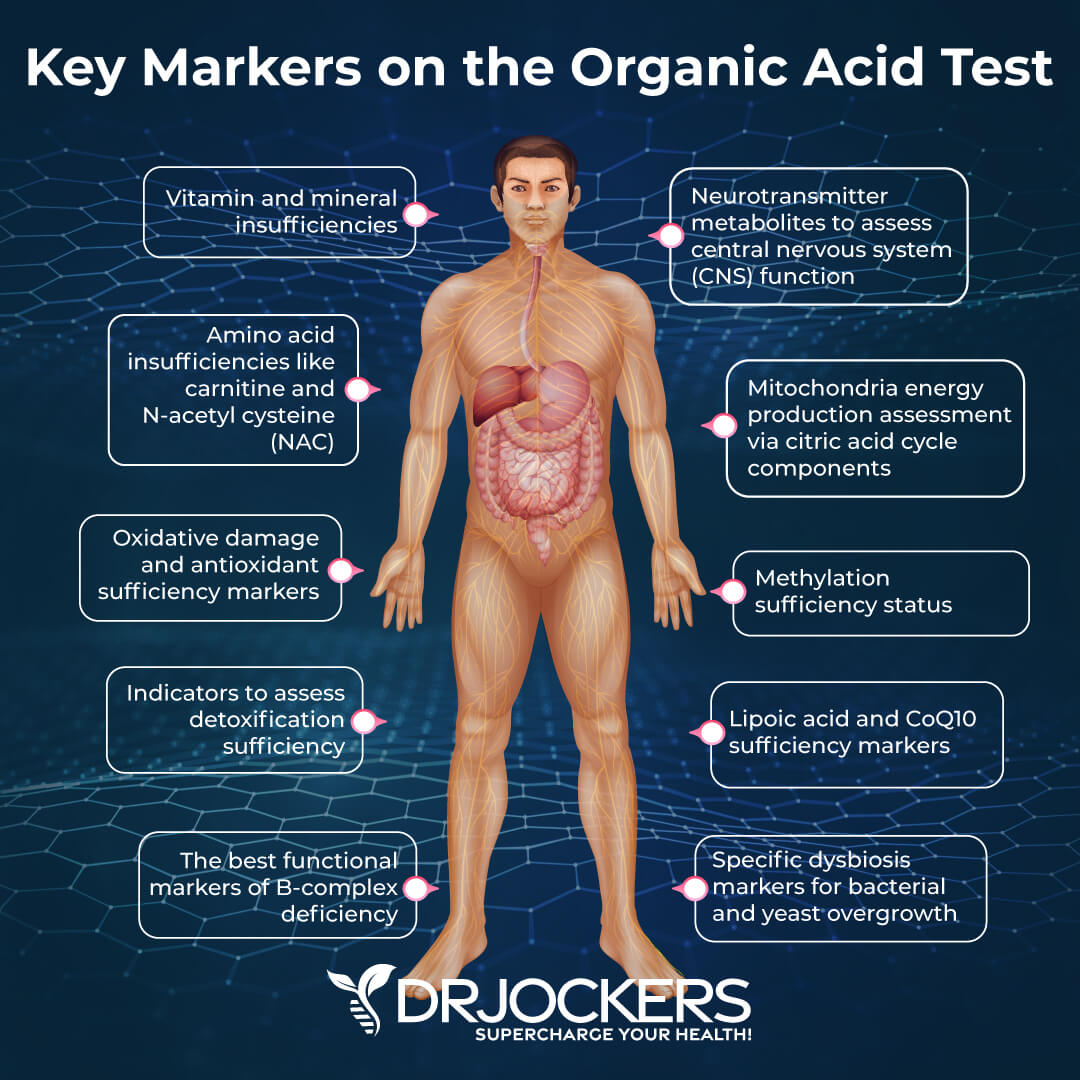
What are Organic Acids?
Organic acids are chemical compounds with acidic properties that are excreted in our urine (1). They are the product of your metabolism, the chemical reactions in your body that build or break down molecules. Your metabolism is the body’s way of producing energy and eliminating waste.
Carbon and hydrogen are always present in organic acids. Oxygen, nitrogen, sulfur, and phosphorus may also be contained in organic acids. Many organic acids come from the bacteria and other organisms that live in the digestive system microbiome.
What is the Organic Acids Test?
The OAT looks at complex biomarkers from various metabolic pathways. It is designed to measure metabolic dysfunction. Abnormal concentrations of organic acids provide functional markers for the metabolic effects of micronutrient inadequacies, toxin exposure, neuroendocrine activity, enzyme deficiencies, and intestinal bacterial overgrowth.
The OAT gives an overview of several major systems in the body and analyzes nutrient deficiencies. Utilizing this test can reveal the need for dietary modifications, antioxidant and nutrient support, detoxification, oxalate reduction, and other therapies.
Organic acids are measured by a combination of gas or liquid chromatography linked with mass spectrometry. They are most commonly analyzed in urine because they are more readily detected in urine. In fact, organic acids are often present at 100 times their concentration in urine rather than blood. There are over 1,000 organic acids that have been detected in urine.
Who Can Benefit from an Organic Acids Test?
The OAT is one of my favorite tests to recommend for clients. It is one of the most cost-effective tests for an impressive amount of information given. This is a great test to perform if you have chronic health issues even though conventional labs are “normal”. This test can be beneficial for children and adults.
The OAT is a valuable test for people with a variety of conditions. If you have sleep abnormalities, fatigue, accelerated aging, autoimmune disorders, chemical sensitivities, weight gain, and blood sugar dysregulation, you could benefit from the Organic Acids Test.
This test can be helpful for people with symptoms of depression, anxiety, ADHD, autism, and mood changes. People with skin issues such as acne, eczema, dermatitis or gastrointestinal issues such as bloating, gas, distention, nausea, and acid reflux should consider this test. You can find information about ordering this test here: Comprehensive OAT.

How to Perform an Organic Acids Test
The OAT is a simple at-home test. You will get a kit with a urine collection cup and detailed instructions and a box and bag to send in the mail all pre-paid. You collect 10mL of first-morning urine before any food or drink is consumed.
Certain compounds can increase some of the key biomarkers and give false positives so proper nutritional instructions are important for accurate results. For 48 hours before you collect the urine sample, you should avoid apples, grapes, raisins, pears, cranberries, and their juices. You should also avoid arabinogalactan, Echinacea, reishi mushrooms, and ribose supplements for 12 hours before collection.

Sections of Organic Acids Test
The Organic Acid test is one of the best labs for looking at a wide variety of health issues. This is why many practitioners recommend the OAT above nearly every other possible lab test.
The graphic below goes over what all the different factors that are studied on the OAT and throughout the rest of this article I will go into the meaning of each of these areas.

1. Intestinal Microbial Overgrowth
Yeast and Fungal Markers
Markers for yeast and fungi are in the first section of the OAT. Elevation in multiple markers is very significant. Overgrowths of yeast and fungi poison the mitochondria and contribute to mitochondrial dysfunction, stress hormone imbalances, and nutritional malabsorption.

Candida
Arabinose is the most common marker indicating the presence of Candida. This is a very sensitive marker and is high on around 90% of Organic acids results. High Tartaric Acid is also seen with Candida, and 3-Oxoglutaric indicates yeast overgrowth in the gastrointestinal tract.
Candida albicans is the most common form of yeast in the body. Candida can build up toxins that contribute to fibromyalgia, migraines, chronic fatigue syndrome, brain fog, depression, and other symptoms. When Candida becomes invasive, it attaches to the intestinal wall causing leaky gut. This can result in food sensitivities, nutrient malabsorption, and intestinal disorders. The OAT provides a reliable way to test for the overgrowth of Candida.

Mold
Several of the markers on the OAT indicate mold colonizing the gut. 5-Hydroxymethyl-2-furoic and Furan 2,5-dicarboxylic (Markers 2 and 4) are byproducts of Aspergillus and other fungal species. This can indicate that Aspergillus mold from food or water damage is growing in the digestive system. Elevations in Furancarbonylglycine can also indicate mold.
These markers are important because Aspergillus produces a specific mycotoxin called aflatoxin which is a carcinogen (2). These mycotoxins are also damaging to the kidneys and liver. The presence of mold can suppress immune function in the gut increasing susceptibility to other microbial overgrowths.
Tricarballyllic (marker 9) indicates the presence of fungal toxins. Tricarballyllic is a chemical linked to a fungus found in corn so the marker can be elevated in people who consume a lot of corn products.
Interestingly, there is a strong correlation between mold and yeast. It is estimated that 80% of people with mold also have yeast. Around 50% also tend to have clostridia.
Mold can have a significant negative effect on different organ systems. For more information about mold, read this article here.

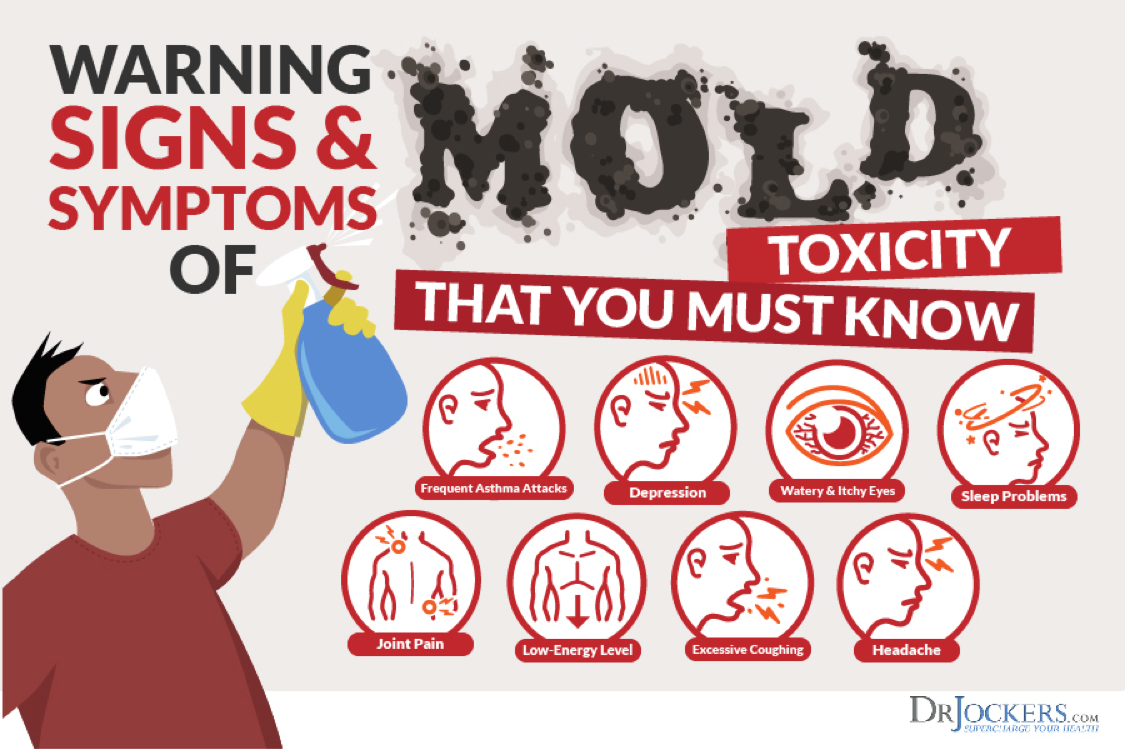
Bacterial Markers
The Organic Acids test also evaluates intestinal bacteria, distinguishing between beneficial and harmful bacteria. Bacteria in the gut produce chemicals that can be measured in your urine.
2-Hydroxyphenylacetic Acid (marker 11), 4 Hydroxybenzoic Acid (marker 12), and 4-Hydroxyhippuric Acid (marker 13) are all markers of intestinal bacterial overgrowth. Elevations in these markers are generally seen with gut dysbiosis and bacterial imbalances.
Hippuric (marker 10) is a byproduct of phenylalanine breakdown and chlorogenic acid (coffee) breakdown. High levels indicate intestinal bacterial overgrowth. Low values may be due to depletion of glycine due to competing for detoxification reactions or gut dysbiosis with low levels of healthy lactobacillus strains.
DHPPA is a marker that indicates beneficial bacteria in the gut. It is an antioxidant and may help lower cholesterol.
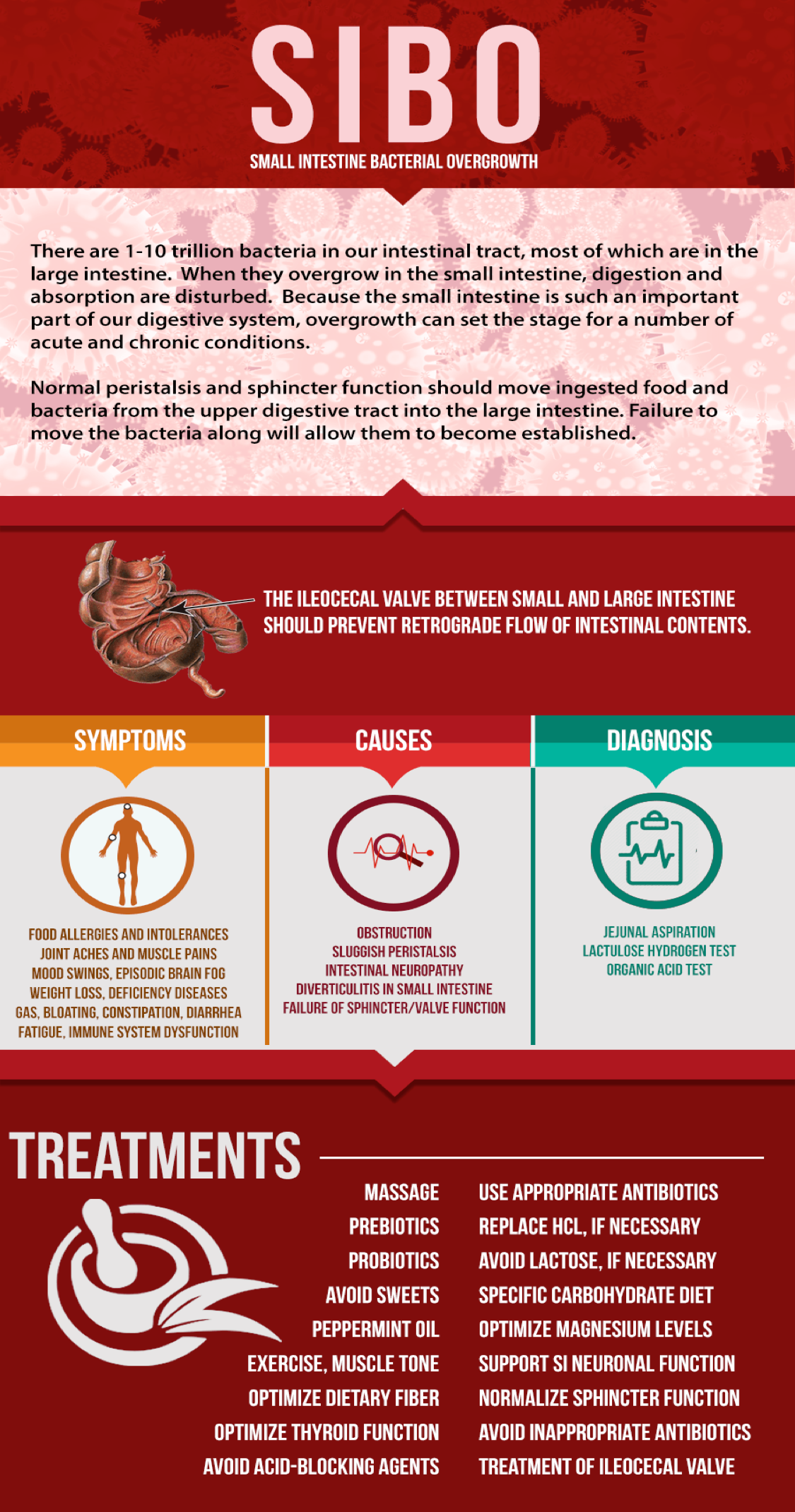
Clostridia Bacterial Markers
The OAT detects specific toxic metabolites of Clostridia bacteria. The toxins released by Clostridia metabolites can inhibit key neurotransmitters in the brain. Clostridia is associated with gastrointestinal disorders including irritable bowel syndrome, Crohn’s disease, and ulcerative colitis.
4-Hydroxyphenylacetic (marker 15) indicates C. difficile, C. stricklandii, C lituseburense & others. HPHPA (marker 16) and 4-Cresol (marker 17) are clostridia markers. HPHPA is one of the primary toxic metabolites of Clostridia. Around 25% of OAT results have elevated Clostridia markers, 80% of which are HPHPA.
These markers can inhibit the enzyme dopamine beta-hydroxylase which can elevate dopamine and cause neurotransmitter imbalances. When dopamine is elevated, it breaks down into different toxic compounds that can be stressful to the brain and nervous system. This can lead to, or exacerbate, the symptoms of disorders such as depression, bipolar disorder, and autism.
Both HPHPA and 4-Cresol are commonly elevated in autism, psychiatric disorders, and GI disorders. The source of HPHPA is a small number of Clostridia species. Significant decreases in symptoms of schizophrenia, autism, seizure disorders, tic disorders, depression, chronic fatigue syndrome, and ADHD have been reported after testing for and treating these specific Clostridia infections (3).
High levels of intestinal yeast and bacteria can worsen behavior disorders, hyperactivity, movement disorders, fatigue, and immune function. Identifying yeast and/or bacterial overgrowth with the OAT can be beneficial for people with a variety of health conditions.

2. Oxalate Metabolites
Oxalic acid is one of the most acidic organic acids in bodily fluids. This organic acid is derived primarily from fungus (Aspergillus and Penicillium), Candida, or your metabolism. Excessive consumption of high oxalate foods and deficiencies in vitamin B6 can contribute to elevations in oxalic acid.
Many of the foods very high in oxalates are healthy foods. High oxalate foods include spinach, beets, chocolate, peanuts, wheat bran, tea, berries, and nuts (cashews, pecans, and almonds).
Glyceric and glycolic are measured on the OAT. These organic acids are linked to genetic defects in oxalate metabolism. Measuring these acids can be helpful for determining if a person has the genetic diseases hyperoxalurias type I and type II. With both diseases, oxalates are high in the urine.
Testing oxalate levels is important because high oxalates can be very dangerous. Oxalate crystals have a sharp physical structure that can cause oxidative damage, increase inflammation, cause pain, and damage tissues.
Oxalate crystals may form in joints, blood vessels, muscles, kidneys, lungs, heart, thyroid, eyes, and even the brain. High oxalic acid can hinder the proper function of vital bodily functions, poison the mitochondria, and contribute to kidney stones.
High oxalates in the GI tract may significantly reduce absorption of essential minerals such as calcium, magnesium, zinc, and more. Oxalates may form in the bones, crowding out bone marrow cells. This can lead to anemia and immunosuppression. Identifying elevated oxalate metabolites is significant for people with chronic pain, joint issues, kidney stones, and other health issues.
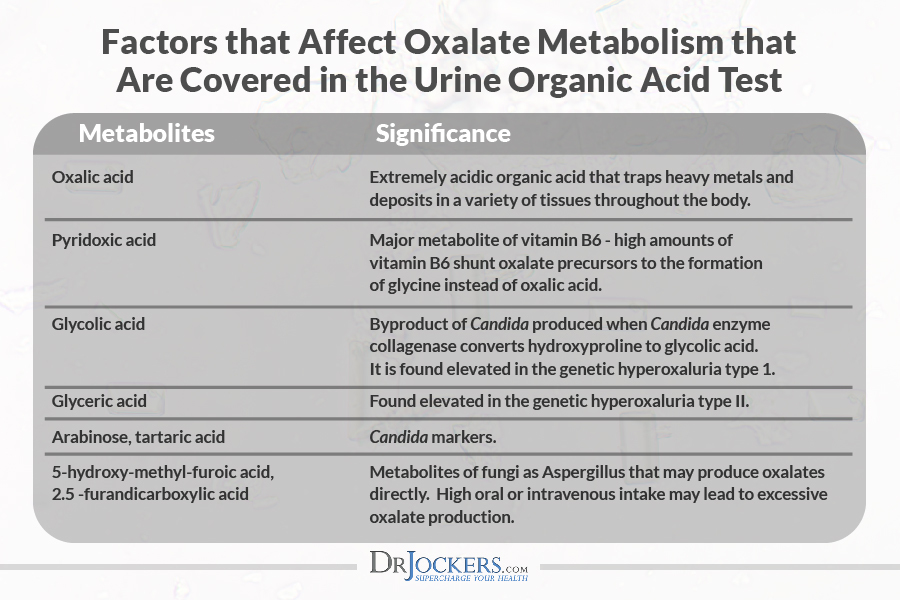
3. Glycolytic Cycle Metabolites
Glycolytic cycle metabolites included in the OAT are lactic acid and pyruvic acid. Glycolysis is the metabolic pathway by which we convert glucose into lactate and pyruvate to form energy.
If levels of lactic and pyruvic acids are elevated, a person has mitochondrial dysfunction. They are burning through sugar and have very poor ability to metabolize fat for fuel. In other words, they are stuck in glycolysis. These are similar metabolic conditions to cancer cells, as illustrated below.
High values for these markers may indicate that environmental toxins, particularly mold, are affecting your mitochondria. High lactic acid is commonly elevated with mold issues.
Elevations of lactic acid and/or pyruvic acid can also be caused by many nonspecific factors, such as vigorous exercise, bacterial overgrowth, shock, anemia, mitochondrial dysfunction, or other causes. While high levels can be due to a genetic issue, most often elevations are related to either yeast/fungal or bacterial overgrowth, high oxalate levels, or high oxidative stress. Nutritional deficiencies resulting from these underlying causes can also cause mitochondrial dysfunction.

4. Mitochondria Markers – Krebs Cycle Metabolites
The Krebs cycle (or citric acid cycle) is a series of chemical reactions in the mitochondria, the powerhouses of your cells. It is the process through which your body generates energy. When the Krebs cycle metabolites are elevated, this can indicate mitochondrial energy pathway dysfunction and deficiencies in important vitamins and enzymes needed for optimal mitochondrial health.
Succinic (marker 24) is a Krebs cycle intermediate. It is most commonly elevated due to a variety of metal and non-metal toxic chemical exposures. A high value for succinic can indicate a deficiency of riboflavin (vitamin B2) and/or coenzyme Q10 (CoQ10). These are cofactors for succinic dehydrogenase in the Krebs cycle. Succinic is also produced by bacterial metabolism of unabsorbed glutamine supplement. Low levels could indicate a need for the branch chain amino acids leucine and isoleucine.
High lactic acid can be related to deficiencies in zinc, CoQ10, B2 or B3. Other markers for mitochondrial dysfunction include fumaric, malic, citric, and 2-ketoglutaric acids. When these acids are elevated, there is a strong possibility of significant mitochondrial energy dysfunction.
Elevated 2-Oxyglutaric acid is an indication of B vitamin or alpha lipoic acid deficiency.
Aconitase is the enzyme that metabolizes citric and aconitic acids. This enzyme is dependent upon glutathione. High levels of citric and aconitic acids indicate a glutathione deficiency.
If citric acid is the only Krebs cycle metabolite that is elevated, it could be due to high citric acid consumption from citrus fruits. It can also be high from intestinal yeast either producing citric acid or inhibiting the human citric acid cycle.
Elevations in Krebs Cycle metabolites are commonly due to environmental toxins such as heavy metals or mold, yeast/fungal or bacterial overgrowth, high oxalate levels, or high oxidative stress. A less common indication of high levels would be a genetic issue.
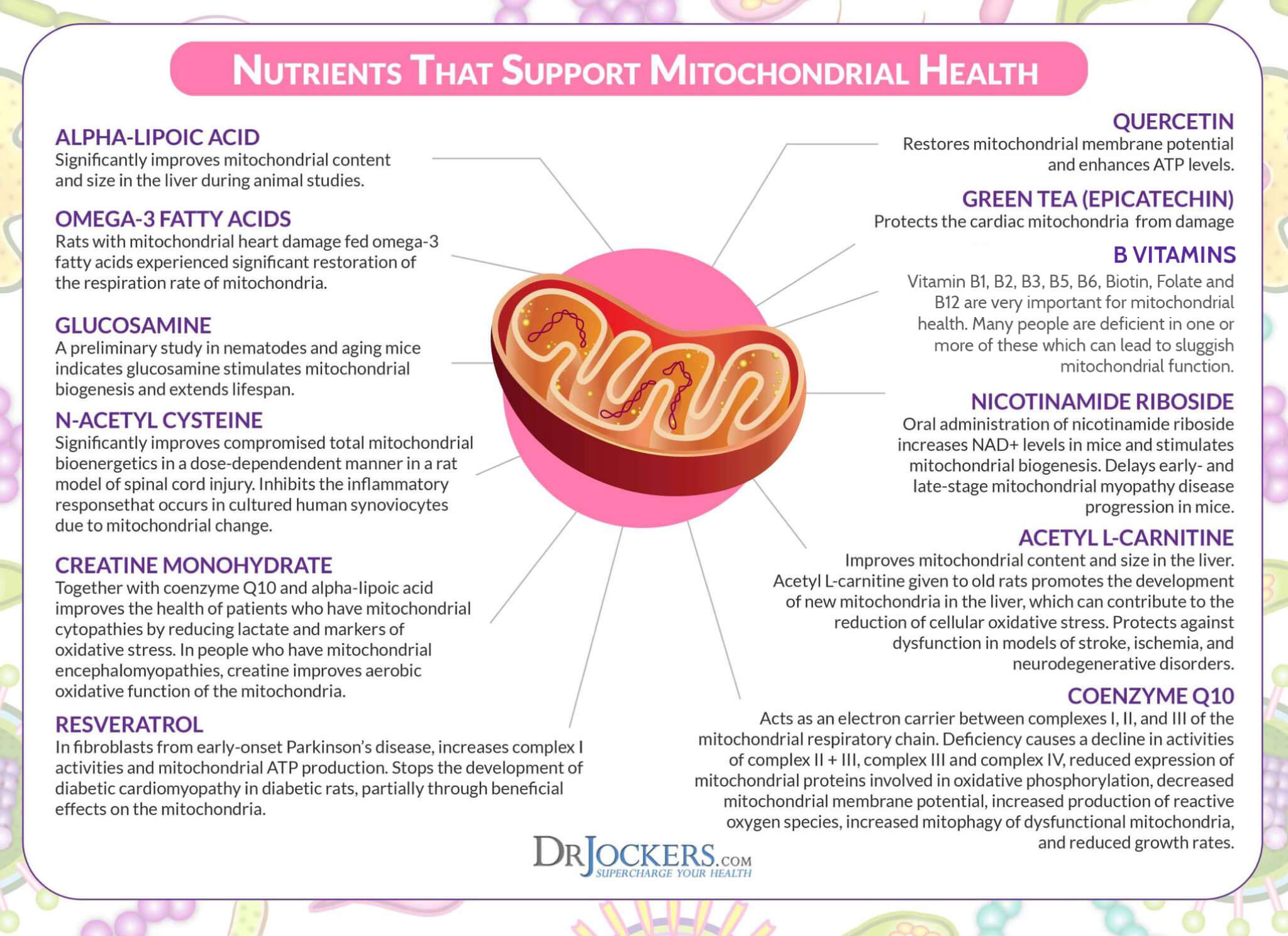
5. Mitochondrial Markers – Amino Acid Metabolites
The three amino acid metabolites included on the OAT are 3-Methylglutaric acid, 3-Hydroxyglutaric acid, and 3-Methylglutaconic acid. These are markers of poor mitochondrial function and poor amino acid metabolism and absorption. Elevations of these markers is an indication that the gut is inflamed.
Elevated amino acid metabolites with normal glycolytic and Krebs cycle metabolites suggests that the person has difficulty digesting and absorbing protein. They are likely a sugar burner with very poor ability to metabolize fat for fuel. It is important to support digestive health when these markers are elevated. Supplemental HCL could be very helpful for someone with protein digestion issues.
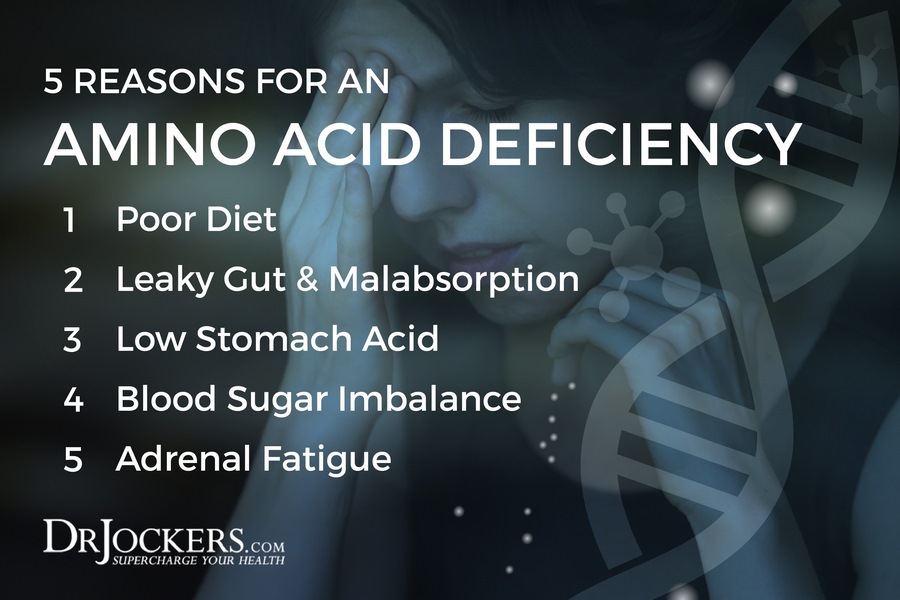
6. Neurotransmitter Metabolites
Testing neurotransmitter levels is critical for anyone suffering from anxiety, depression, insomnia, ADHD, autism, and other neurological disorders. The OAT measures phenylalanine and tyrosine metabolites (HVA and VMA) and tryptophan metabolites (5-HIAA, quinolinic acid, and kynurenic acid).
Phenylalanine and Tyrosine Metabolites
Homovanillic acid (HVA), a dopamine metabolite, and vanillylmandelic acid (VMA), a metabolite of epinephrine and norepinephrine, are often elevated due to increased stress. With high levels of stress, there is an increased output of catecholamines from the adrenal glands. These markers can also be elevated with high lead.
High levels of HVA can also be related to high doses of L-DOPA, dopamine, phenylalanine or tyrosine. Elevated levels of HPHPA, the main metabolite of Clostridia, can elevate dopamine as discussed above.
High HVA and low VMA is a sign of poor dopamine-norepinephrine conversion. This can be related to low vitamin C, low copper, or bacterial overgrowth.
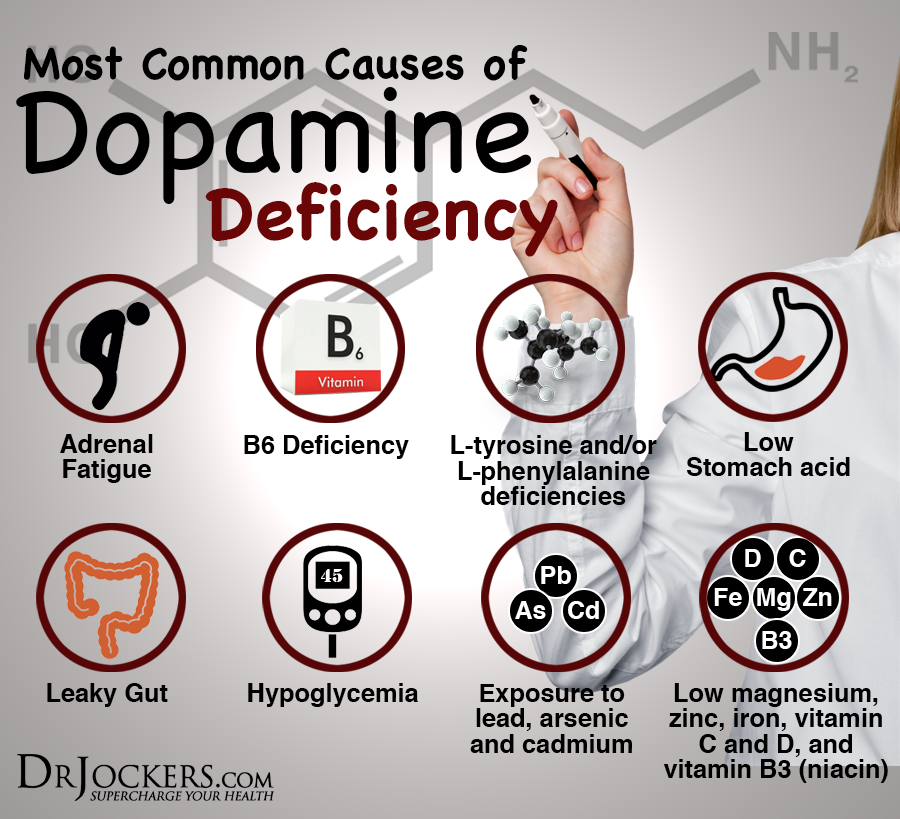
Tryptophan Metabolites
5-Hydroxyindoleacetic acid (5-HIAA) is a metabolite of the neurotransmitter serotonin. High levels can result from serotonin supplements (5-HTP) and low levels can indicate a need for more serotonin production. Serotonin deficiencies are common in depression, anxiety, and sleep disorders.
Quinolinic and kynurenic are tryptophan metabolites. Tryptophan can be converted to quinolinic acid and at high levels can cause a severe inflammatory acid. Quinolinic is neurotoxic at elevated levels so high levels indicate neurological inflammation.

Increased levels of quinolinic in the urine may be caused by chronic inflammation from microbial infections, central nervous system degeneration, excessive tryptophan supplementation, or even exposure to phthalates. One of the major factors that increase quinolinic acid is the same beta-amyloid peptide that is found to be elevated in the brain of people with Alzheimer’s disease. The stimulus for production of this peptide is bacteria and Candida. It is important to stop supplementing with tryptophan when this marker is high.
Kynurenic Acid can be elevated due to the use of tryptophan supplementation, chronic infections (especially yeast), and B6 deficiencies. Very high levels indicate a genetic deficiency in the enzyme kynureninase.
A high ratio of quinolinic to serotonin indicates excessive inflammation from recurrent infections, tryptophan supplementation, immune overstimulation, high cortisol, or toxic exposure to phthalates. When dopamine, norepinephrine, epinephrine, and serotonin are low, it is due to low production of neurotransmitters, low methylation, or low neurotransmitter metabolites.
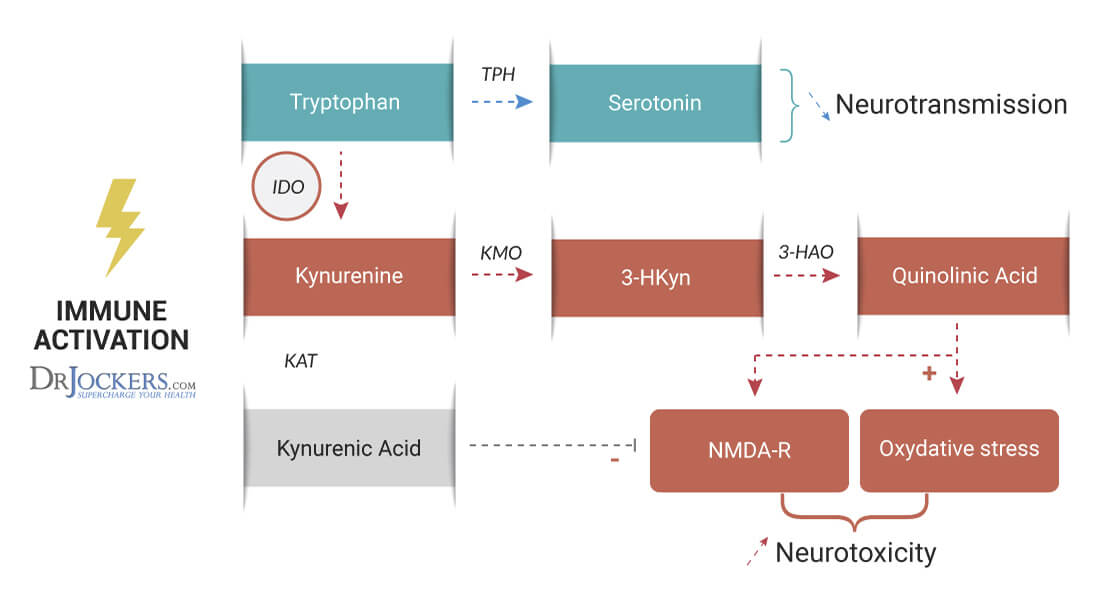
7. Pyrimidine Metabolites – Folate Metabolism
The pyrimidine metabolites are markers of folate metabolism. The two markers are uracil and thymine. Folate acts as a methyl donor in converting uracil to thymine.
High levels of uracil are found with folate (B9) deficiencies. Elevated Uracil could also indicate MTHFR homozygous gene mutation and methylation problems including high homocysteine.
High levels of thymine indicate a deficiency in vitamin B1. Low B1 is common with alcoholics, and for people who are on very high carbohydrate, low-nutrient diet. Very high levels are associated with inflammatory diseases and cancer.
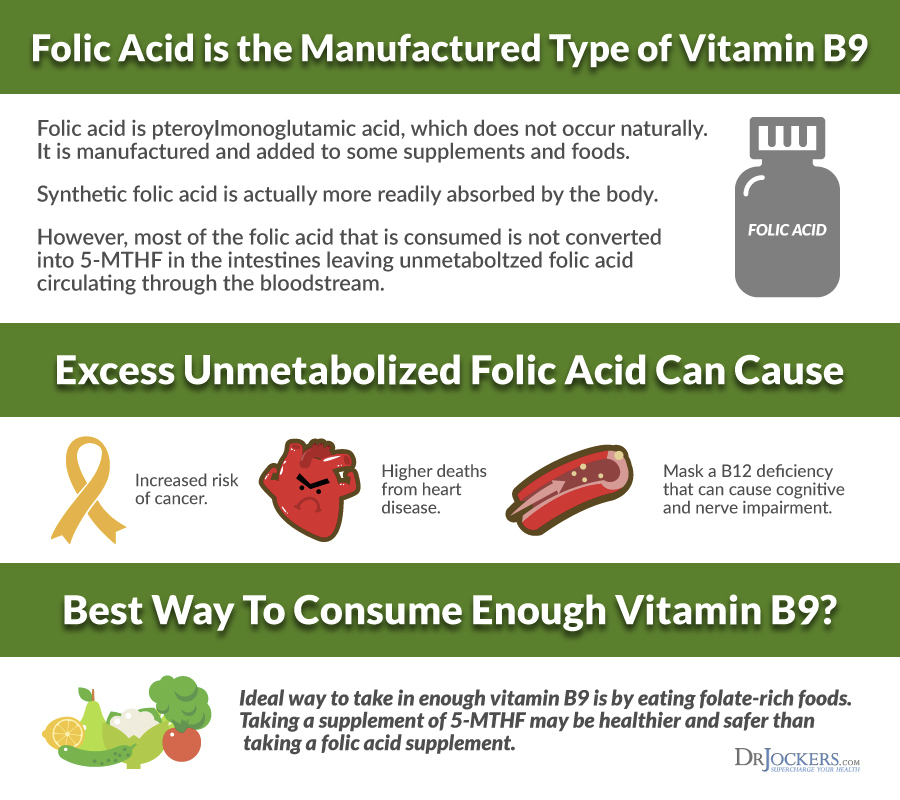
8. Ketone and Fatty Acid Oxidation
The OAT measures eight specific ketones and fatty acid metabolites. These markers show how well the body metabolizes fat. It is normal for these markers to be elevated for a person on the ketogenic or low-carbohydrate diet. However, if a person is not on a ketogenic or low-carb diet, elevations show difficulty absorbing fats.
When a person has difficulty absorbing fats, their mitochondria (the powerhouses of your cells) are not able to burn fat for energy. This is often caused by gut inflammation inhibiting lipid absorption. Candida, bacterial toxins, and high oxalates can contribute to fat malabsorption.
Very high levels of fatty acid markers can indicate oxidative stress in the cell. Elevations in the mitochondrial markers further indicate oxidative stress. An anti-inflammatory nutrition plan is critical for improving these markers, along with targeted supplementation as indicated by other abnormal markers.

9. Nutritional Markers
An important aspect of the OAT is the identification of nutritional deficiencies. Nutritional deficiencies contribute to many mental and physical health issues. The OAT measures byproducts that occur in the body when a nutritional deficiency exists.
The nutritional markers include key vitamins and glutathione precursors. B vitamins, vitamin C, CoQ10, N-Acetylcysteine, and Biotin (vitamin H) are all measured.
High values for methylmalonic acid (marker 50) indicate a B12 deficiency, pernicious anemia, small intestinal bacterial overgrowth, and malabsorption. Other markers for B vitamin levels are pyridoxic Acid (B6), Pantothenic Acid (B5), and glutaric Acid (B2).
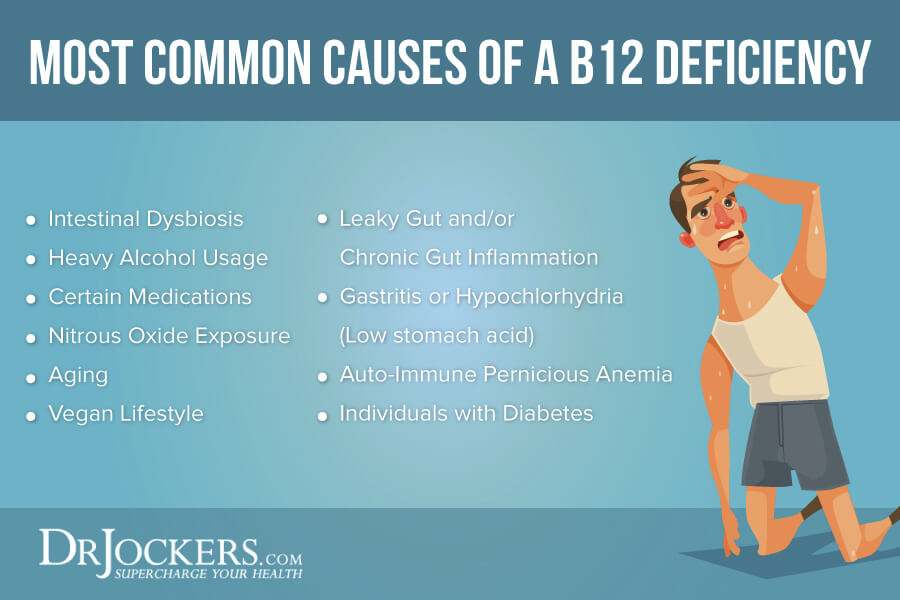
Mitochondrial Nutrients
Determining whether these levels are high or low can be very helpful. For example, low levels of pyridoxic acid (B6) are associated with high oxalates and low neurotransmitter levels. High levels of pantothenic acid (B5) is common with yeast overgrowth while low levels could affect adrenal hormone production (cortisol).
Most OAT results show low ascorbic acid which is indicative of low levels of vitamin C. This is because vitamin C has a 6-hour half-life so it is out of the system by first-morning urine. When ascorbic acid is high, this may be due to yeast overgrowth.
3-Hydroxy-3-Methylglutaric Acid (HMG) is a precursor of CoQ10 and cholesterol. Slightly increased levels can be indicative of intestinal yeast overgrowth. High levels can also indicate decreased COQ10 synthesis. For people on cholesterol medications (statins), this level is often increased because statins reduce your body’s levels of CoQ10.
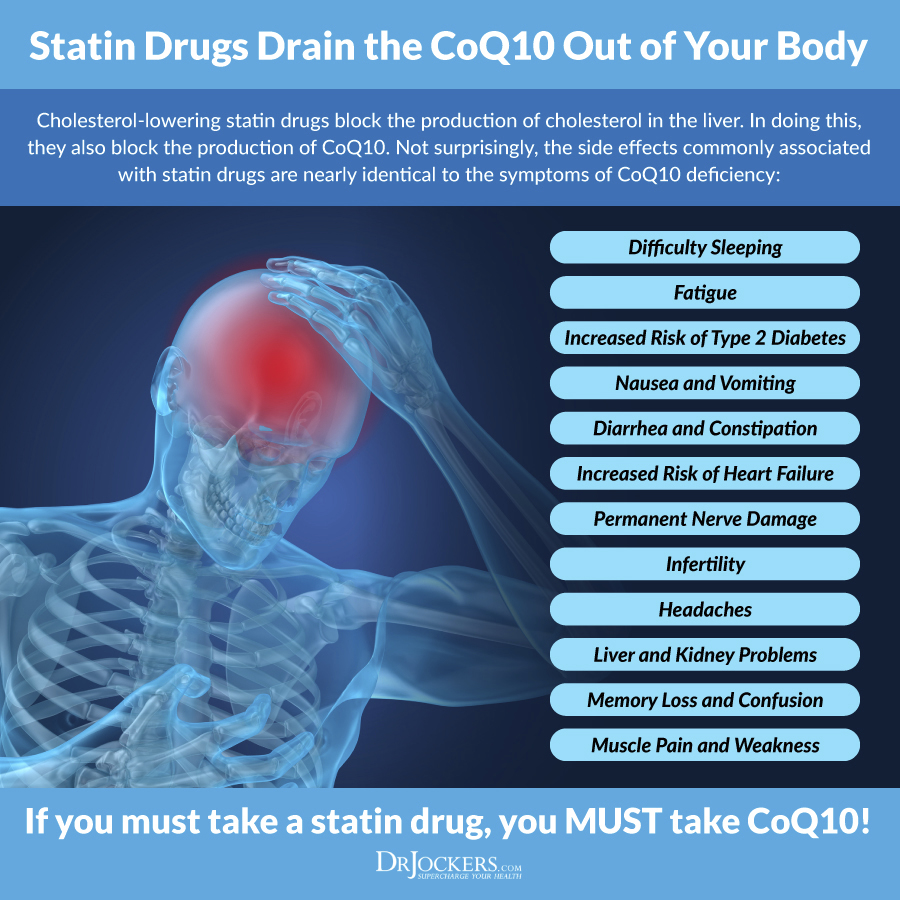
Antioxidant Markers
N-Acetylcysteine (NAC) is a glutathione precursor and chelating agent. This powerful antioxidant increases glutathione levels which help bind to toxic metabolites. Low levels of NAC indicate low glutathione levels. Low NAC is common on OATs because the body is converting the NAC to glutathione.
It is important to compare pyroglutamic (marker 58) for glutathione to determine if the person is not making enough glutathione (low value) or if they are using up too much of their glutathione (high value).
Elevated levels of methylcitric acid indicate a biotin (vitamin H) deficiency. Biotin deficiency may be due to malabsorption, SIBO, and excessive raw egg white consumption.
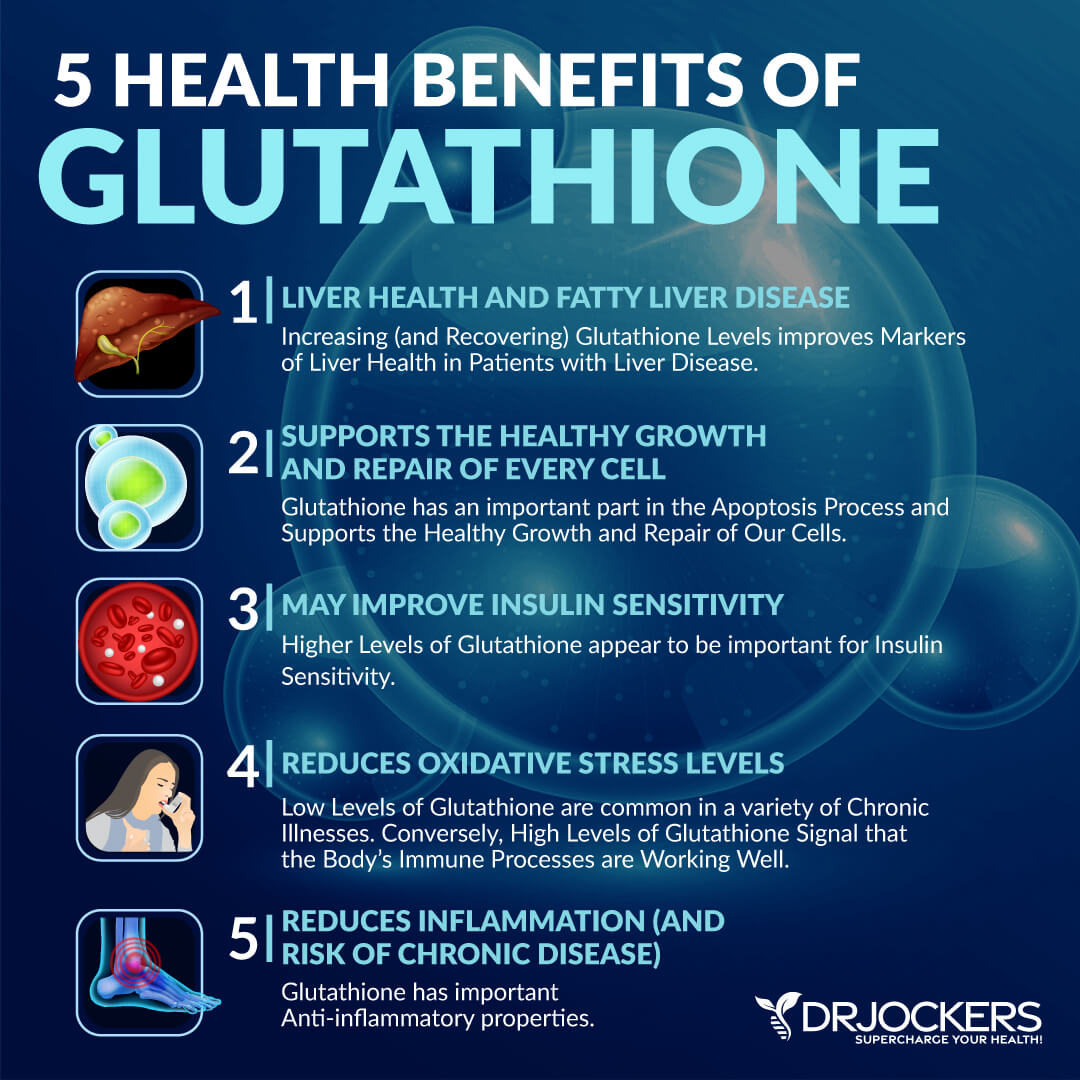 10. Indicators of Detoxification
10. Indicators of Detoxification
The OAT includes indicators of your body’s ability to detoxify, including important markers for glutathione levels. Glutathione is your body’s master antioxidant. It is often deficient in chronic health conditions.
Pyroglutamic acid (marker 58) is a metabolite of glutathione. Elevated levels of this acid indicate a glutathione deficiency, usually because the person is using too much glutathione. Infections, oxidative stress, and environmental toxins can contribute to the depletion of glutathione.
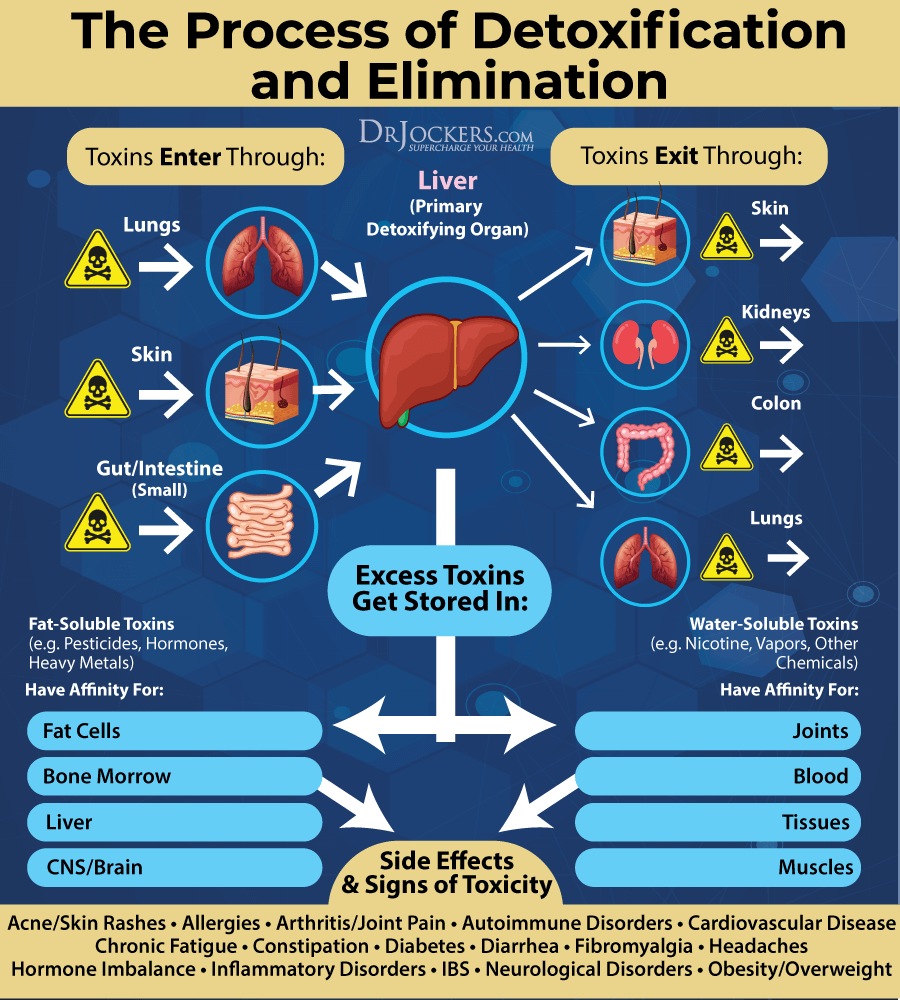
Homocysteine & Ammonia Metabolism
2-hydroxybutyric acid is an organic acid that is elevated when there is increased production of sulfur amino acids derived from homocysteine. The reasons for an increase can be due to a glutathione deficiency, methylation imbalances due to MTHFR/MTRR gene variants, nutritional deficiencies, alcoholism or diabetes, or a CBS mutation. It can be a marker used for insulin resistance and oxidative stress as well.
Another important detoxification marker is orotic acid. Elevations in orotic acid are associated with ammonia toxicity. Excess ammonia affects brain tissue, causing symptoms such as headaches, confusion, inability to concentrate, and anxiety.
High ammonia can result from kidney problems, drug toxicity of the liver, viral infections, gastrointestinal disorders, or gut dysbiosis. It may also be caused by genetic issues with ammonia metabolism.

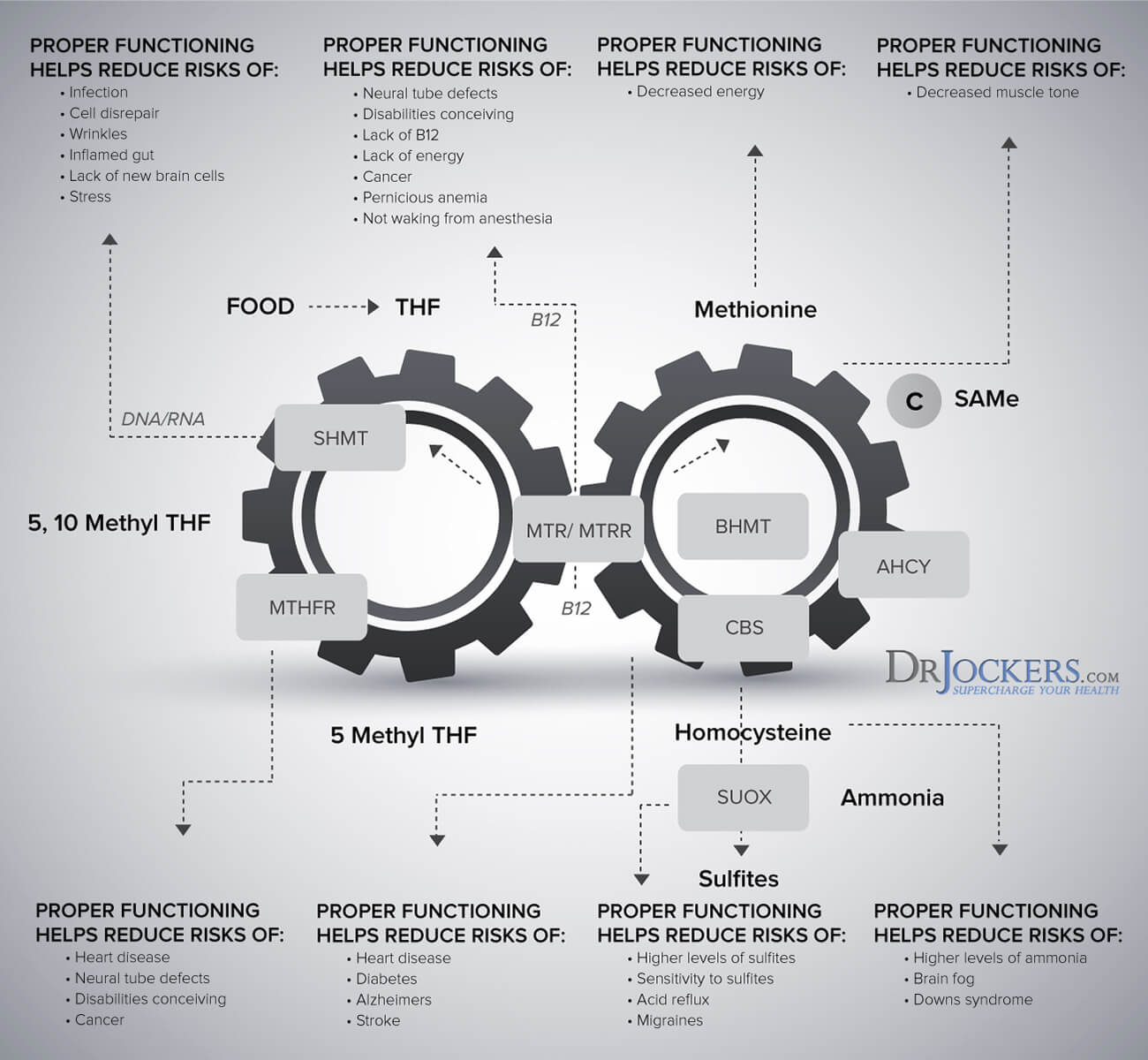
2-Hydroxyhippuric Acid
2-Hydroxyhippuric Acid (marker 61) is a conjugate of glycine and hydroxybenzoic acid (salicylic acid). Elevated levels of this acid could be due to high aspirin or aspartame usage. High levels could also be due to salicylic acid producing an overgrowth of bacteria in the gut.
Elevations in 2-Hydroxyhippuric may indicate poor phase II liver detoxification, which depends upon glycine. Supporting liver detoxification pathways, reducing exposure to aspirin and aspartame, and improving your gut microbiome are critical strategies when this marker is elevated.
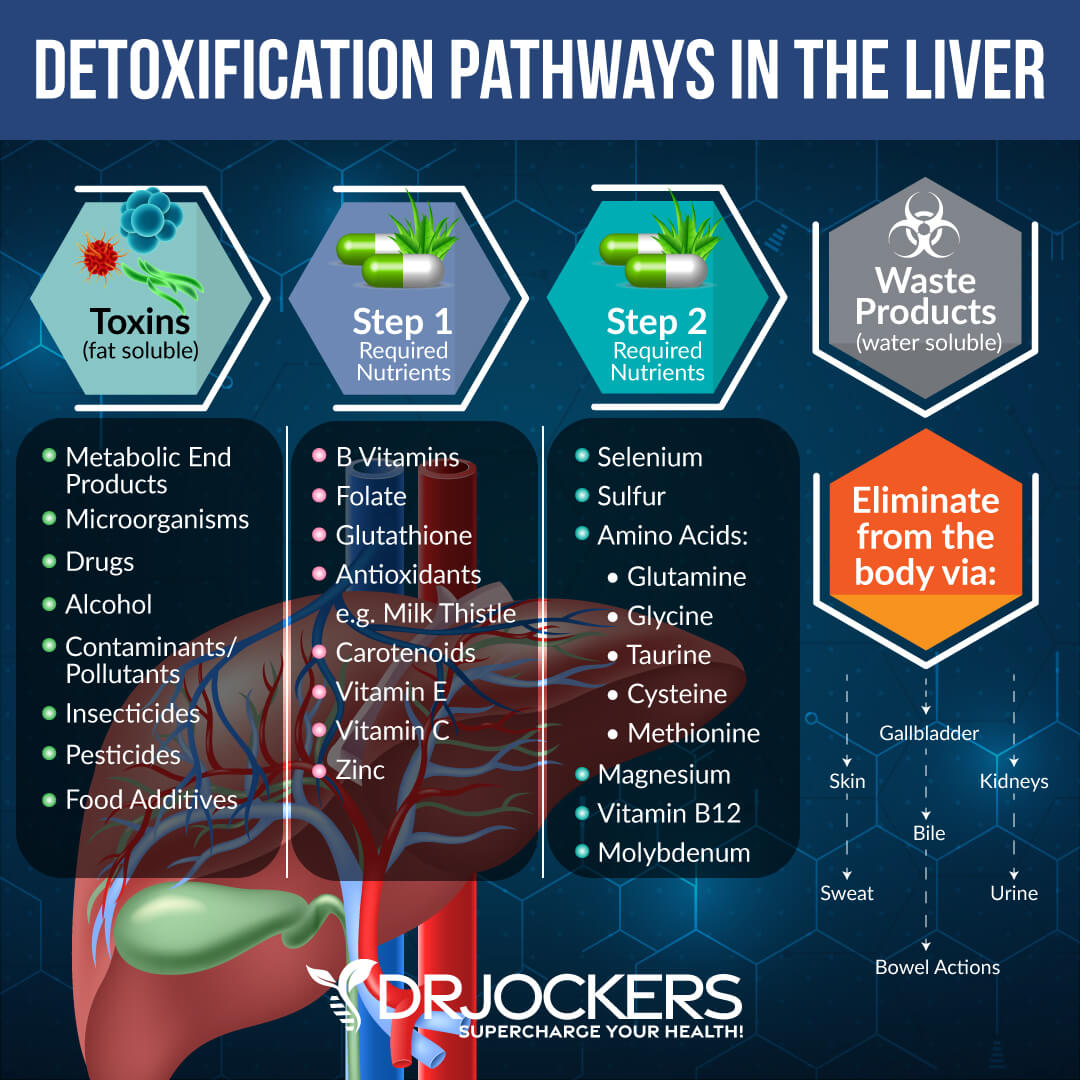
11. Amino Acid Metabolites
Amino acid metabolites are tested on the Organic Acids test. It is normal for most of these metabolites to be low. However, if these markers are high, the person likely has an improper metabolism of amino acids. Multiple markers in the significantly high range are very concerning.
2-Oxoisocaproic acid, 3-Methyl-2-Oxovaleric acid, 2-Hyroxyisocaproic acid, 2-Oxoisocaproic acid are branched chain amino acid metabolites. Elevated levels of these metabolites can be related to ketosis or vitamin B1 (thiamine) and lipoic acid deficiency. Elevations can also be related to a genetic disorder (maple syrup urine disease).
Mandelic acid is the major metabolite of styrene, and elevated levels usually result from toxic exposure to styrene (particularly if this is the only elevated amino acid). Styrene is primarily used in the production of polystyrene plastics and resins. Air exposure is the most common route.
Elevated levels of phenyllactic and phenylpyruvic acids can indicate increased dietary phenylalanine intake. A person with elevated levels would need to avoid phenylalanine containing foods such as cheese, nuts, seeds, beef, eggs, and other foods.
Very high levels of mandelic, phenyllactic, and phenylpyruvic acids could indicate genetic error phenylketonuria (PKU). Most of the time, these rare genetic issues are discovered very early in life. Other clinical symptoms of PKU include ADHD, seizures, severe learning disorders, stubborn eczema, and a musty odor coming from the skin. It is also important to look at the creatinine levels.
One single amino acid increase could be due to a specific nutritional deficiency or a genetic defect. High levels of multiple amino acids are a sign of poor protein metabolism and absorption. This can be related to poor digestive juice production, nutrient deficiencies, and infections. It can also be related to increased catabolic activity in the body, in which case phosphoric acid will usually also be high.
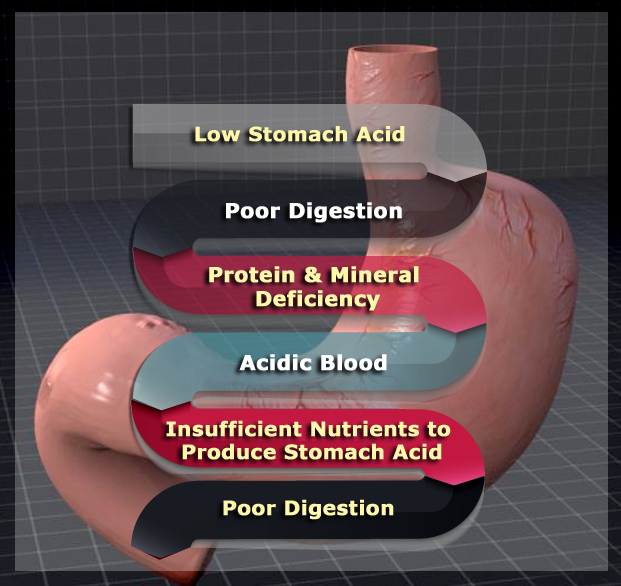 12. Mineral Metabolism
12. Mineral Metabolism
Phosphoric acid (marker 75) is a marker of vitamin D and calcium. This marker indicates whether vitamin D receptors are activated. If phosphoric acid is low, then the person is likely vitamin D and/or calcium deficient. Low levels can be due to low phosphate consumption, low digestive juice production, or deficiencies in vitamin D, vitamin K2, or magnesium.
High levels of phosphoric acid may indicate that the person is supplementing with too much vitamin D. High levels can be also related to poor diet (high phosphate consumption from processed foods) and/or lead toxicity. This increases bone turnover and poor bone formation. Low levels of phosphoric acid are due to low phosphate consumption or vitamin D3, K2 or magnesium deficiencies.

13. Fluid Intake and Hydration Levels
The OAT includes a urinary creatinine marker which measures fluid intake (how diluted the person’s urine is). If creatinine is high, this is usually high due to dehydration.
High creatinine could also be due to creatine supplementation, excessive exercise or a urinary tract infection. A creatinine level of over 300 may be due to kidney dysfunction.

Conclusion
The Organic Acids Test provides a complete overview of your metabolism. It is a comprehensive assessment of more than 70 unique urinary metabolites. The Organic Acids Test evaluates yeast and bacterial overgrowth, vitamin and antioxidant levels, fatty acid metabolism, neurotransmitter levels, oxalate levels, mitochondrial function, oxidative stress, detoxification, and more.
There are a variety of possible causes for high levels of organic acids including high carbohydrate diets, immune deficiencies, infections, oral antibiotics, and genetic factors.
The Organic Acids test can help identify the underlying causes of various health conditions and give a thorough analysis of your overall health.
The OAT is simple to perform but can be complex to analyze and understand. It is important to work with a practitioner who is trained to analyze the test and make appropriate recommendations based on the results.




Thank you for your holistic approach to medicine. I’ve been treated for various conditions and I prefer a holistic approach because it treats more aspects to health. Where can I get these tests?
Thanks for reading Emily! All of the labs we offer, including the OAT, can be found on this page here: https://drjockers.com/lab-testing/
This is great but you fail to explain what abnormal low levels mean. Most people make this same mistake, causing people to only believe something is wrong if their values are too high.
Low levels are often non-indicative Dianna. Thanks for pointing that out!
You mention “elevated” levels of fatty acid markers. I recently had this test done, and was kind of shocked at the levels I am dealing with. My 3-Hydroxybutyric which should be in the 3.1 range, is 496. My Acetoacetic score, which should be around 10, is 830. These seem so over-the-top that I wonder if there is seriously wrong here. Can you shed any light on having levels this high? Thanking you in advance.
Hi Dr. Jockers,
This information is so helpful-thank you. It is more than tthan the functional doctor i am working with provided. I also did a Toxic non metal panel and again i dont understand some of te high markers and former doctor was of no help. He was more of an alarmist and with my already high anxiety this is the last thing I need.
I am wondering if you do a blog with an explanation of each of these tests. I am particularly worried about my 2-Hydroxyisobutyric Acid (@HIB) levels. I was told that it has ot come from contaiminated ground water. As you can imagine i have been in a total panic as this is all my son have really drank for the last 2 years. We have a well with a highly rated R/O filtration system.
I have since in my quest ot get answers see that being on a very low carb diet could also cause very high levels of this. Have you aloso found this to be your experience.
Any advice, indsights or the like would be gretly appreciated.
Thank you in advance.
Hey Melissa, typically high 2-Hydroxybutyric makes me think methylation issues. You may want to consider using this: https://store.drjockers.com/products/homocysteine-support
With low glutathione levels, (one glut. transferase mutated, one deleted), methylcobalamin in your homocysteine support supplement will cause catastrophic reactions involving immune and cardiac symptoms. Any chance of having folinic and another form of b-12?
That is why we support glutathione as well in our products such as our homocysteine support with NAC in it: https://store.drjockers.com/products/homocysteine-support
Hey my name is Patricia I have a really bad severe problem with learning since I was a kid I am now51 and I still can’t comprehend. What test do you think would be best for this?
Hey Patricia, I am sorry to hear this! I would recommend working with a functional health practitioner who will get to the root cause of the problem, run the proper testing based on your health history and customize a specific plan for your needs. This article will help: https://drjockers.com/functional-nutrition-tips-to-find-a-great-health-coach/
I hav ringing in my ears for 15 years and severe learning disability Ivan not comprehend? What test are recommended for this
Hey Patty, It is best for you to work with a functional health practitioner that will work to understand your health history and recommend testing. This person will customize a plan that fits your goals and help you on your healing journey. This article will help: https://drjockers.com/functional-nutrition-tips-to-find-a-great-health-coach/. I would also recommend reading this article: https://drjockers.com/tinnitus/
This is a B1 deficiency
The OAT is very complex to interpret and MUST be done with an “eat the fish, spit out the bones” mindset.
Polyphenols can ( and do ) account for some elevations for example.
Do it Monday morning and then again Thursday morning and the results WILL vary.
It’s extremely useful used in conjunction with other tests. Genova’s nutreval costs a bit more but will fill in more of the puzzle.
Richard Lord (who may have involved with the development of the test) has two lengthy and comprehensive interpretative documents available online, one addressing dysbiosis and the other detoxification. Highly recommended reading.
Most FM doctors simply aren’t that adept at interpreting the OAT. It’s extremely complicated.
Hey Debra, Thanks for sharing! We offer the Great Plains Organic Acids test at DrJockers.com. It includes oxalates which is a valuable marker. Our health coaches have experience with this test and can help if you need input as to your results.
Hi,
I was diagnosed with seronegative RA last year. My bloodwork is negative for everything, including inflammation. I don’t fully agree with my diagnosis. My symptoms are mild, have them for at least 10 years and it seems that my tendons and ligaments are always sore.
How could the OAT test help in my condition?
Would it help with better diagnosis?
Hey Yola, I am sorry to hear this. It sounds like you have a lot going on. Yes, I would recommend an OAT test and I also suggest working with a functional health practitioner that will help get to the root cause of your health problems. This article can help.
Dr
Would this test be good to see just what may be causing my depression
Should one avoid taking supplements for several days prior to the test?
Yes about 3 days before is best.
What would you recommend as the next step for a teenager with high oxalic and glycolic acids?
I would recommend following a lower oxalate nutrition plan. https://drjockers.com/low-oxalate-diet/
Thank you Dr. Jockers for your information.
I have been reading your blog and enjoying. Keep up the good work.
I would like to know if I can Take GABA with antidepressants.
Thank you
Sage
Hello Sage, unfortunately, we are unable to give specific advice related to medications but that is an important question to ask your doctor or functional health practitioner.
what would high levels of suberic acid mean. 7 was the reading however every other ketone was withing normal range
If that is all that was raised, it is most likely not an issue.
Hey dr,
What does higher end of norm of 3-Methylglutaric and high Glutaric mean, along with high Adipic and Suberic please?
Also low vit C, Methylcitric, Aconitic, Quinolinic, and high HVA / VMA Ratio?
Appreciate any info!
I have tried coupon codes links and they do not work DRJMOBILE20 did not work for 20% off. ordering 2 tests one for my husband and myself. on social security and need a discount if at all possible. want to order ASAP husband developing dementia/scary